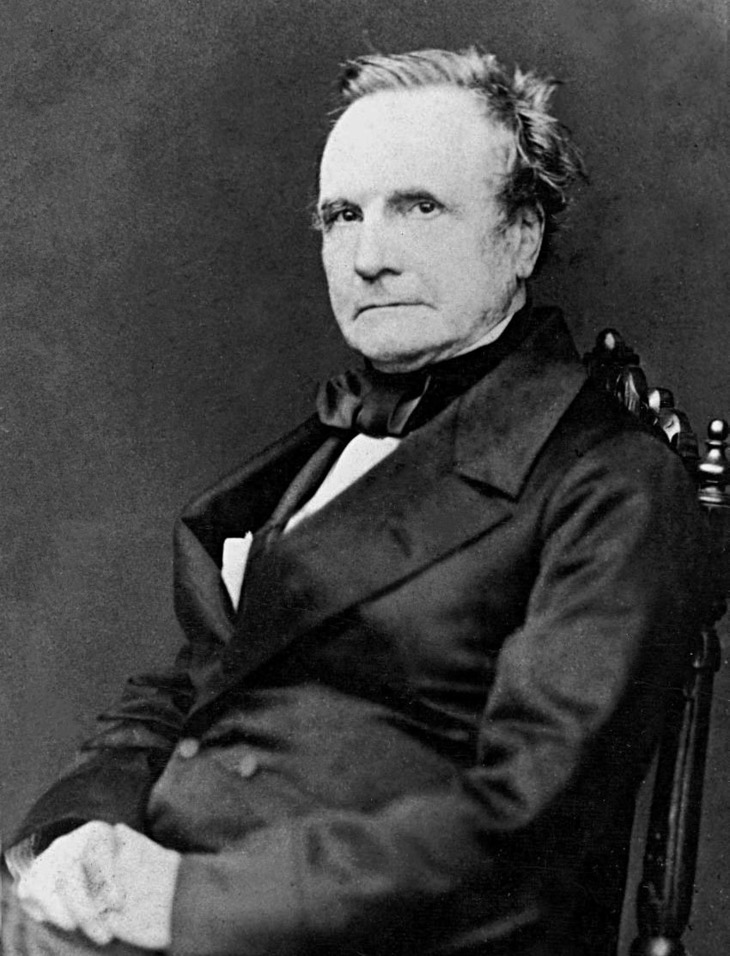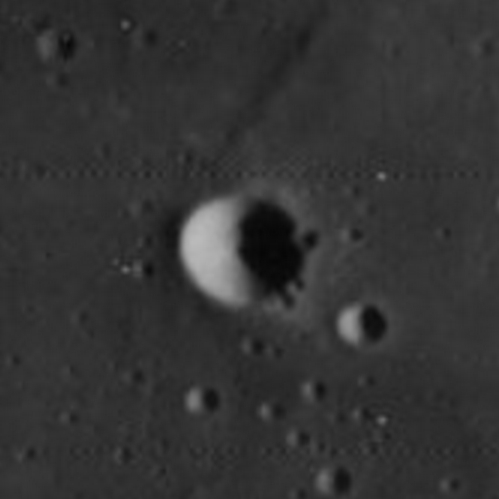There are at least 70 Londoners on the moon. Not surprisingly they are all dead. Lunar crater names serve as celestial memorials for some former London residents. Many have famous names like Newton and Freud. But our selection avoids the usual suspects. Who on earth (or on moon) were Mary Blagg and John Russell. And who's moon fever got started by the terminator?

Chaucer
The lunar dust bowl of remembrance is mostly reserved for scientists and explorers. An odd exception is Geoffrey Chaucer. His eye roved further from London than Canterbury, it seems. He compiled a treatise on the astrolabe (an ancient navigation instrument using the stars) and peppered many astronomical and astrological references in his bawdy tales.
Here's the beginning of his prologue for The Wife of Bath:
In feelynge, and myn herte is Marcien.
Venus me yaf my lust, my likerousnesse,
And Mars yaf me my sturdy hardynesse
Londonist translation:
In feeling, and my heart is Martian.
Venus me gave my lust, my liquorousness,
And Mars gave my sturdy hardiness

Dollond
We mourn the disappearance of the name of Dollond from among opticians on the high street and welcome the chance to chide philistine corporate raiders about it here, because the brand was one of the few surviving from the 18th century. So, at least it survives on the moon. John Dollond from Spitalfields was not just associated with spectacles. His name attaches to one of the most radical improvements in telescopes since their invention. This was an advance in lenses which he exploited allowing a clearer view, though his claim to a patent was (justifiably) contested.

Babbage
Charles Babbage is known for his computer (which he never built) and for his calculating machine (which he did). But the impulse to compute came from an interest in astronomy. He was a founder of the Royal Astronomical Society when astronomy was mostly about cataloguing the future positions of stars to help navigators. These nautical almanac tables were all hand calculated and naturally they were full of mistakes, a fault he sought to rectify by employing machines, preferably powered by steam. Cost, and scepticism at the likely market for steam computers, were the project's undoing.

Comrie
The machines Babbage conceived were only ever put to serious use processing statistics about death rates for insurance companies, so the 'retired clergymen' who were the human nautical almanac compilers struggled on until a new broom arrived at HM Nautical Almanac Office at Greenwich in 1925. New Zealander Leslie Comrie replaced some of the clergymen with mechanical calculators.
Having lost a leg in the first world war, attempts at rehabilitation awakened his interest in serious number crunching. He founded a business in London in the 1930s consisting of people with calculators, the Scientific Computing Service, after he was sacked from the NAO for a misdemeanour. Despite the stain on his CV he still won a place of honour on the moon.

Russell
Not Bertrand Russell, the mathematician, but artist John. John Russell, Royal Academician, painted the notables of his day including Captain Bligh and Dr Willis who treated the 'lunatic' George III. A fellow artist showed Russell the moon through a telescope one day from a garden in Fitzrovia. Crude and childish textbook depictions had not prepared him for the fine detail that he saw at 'the terminator', the boundary separating light and dark. A fascination with the lunar orb swiftly followed and Russell spent 20 years producing a detailed view of the moon, with lunar globes made using his depictions.

Goodacre
At Londonist we love a hand drawn map. In 1910, after eight years work, the north London carpet merchant and amateur astronomer Walter Goodacre produced, based on accurate measurements, a remarkable moon map 77 inches (about 2m) in diameter. It looks like this:

Somerville
Scottish born Mary Somerville had to fight for her trip to the moon. Her father was convinced that mathematical learning would bend her mind so as to be fit only for the madhouse. She might have resorted to reading maths books under the bedclothes but for the fact that her suspicious father forbade her candles in the bedroom. After marriage she found encouragement in the intellectual circles of London and went on to produce a multi volume English elaboration of the French mathematician Pierre-Simon Laplace's magnum opus on the motions of planets etc.

Clerke
Agnes Clerk settled in London in 1877 and wrote a comprehensive book on astronomy in 1885. Although not a working astronomer herself she declined an offer to become a computer at Greenwich in 1889, put off by the thought of having to cross Greenwich Park at night. She was a populariser of science (though not an easy read) and through her, the public learnt of the significant advances the field had undergone. No longer just points of light referenced by seamen, or props for astrologers, stars acquired substance. Starlight was revealing what they were made of.

Brayley
We think there ought to be a monument somewhere to the last minute substitute, and we think we may have found it. Edward William Brayley was one of those busy Victorians, a product of joyless parental cramming and probably also many cold baths. He became a librarian and lecturer at the London and Royal Institutions. Meteors, metals, meteorology and primitive man piqued his interest. One of the few admiring things said of him was that, so broad was his knowledge, he was often able to step up to the podium at the last moment if an advertised lecturer fell sick. Now he has his name on a crater.

Blagg
The days are gone when you might think of naming a crater after yourself. Mary Adela Blagg — who just about scrapes in as a Londoner having attended a Kensington finishing school in 1875 — was one who created the lunar naming convention in 1935, helping to sort out cases where over the centuries the same feature had acquired multiple names. Of course, she had a crater named after her. If you ever go to the moon and care to seek it out, it looks like this:




